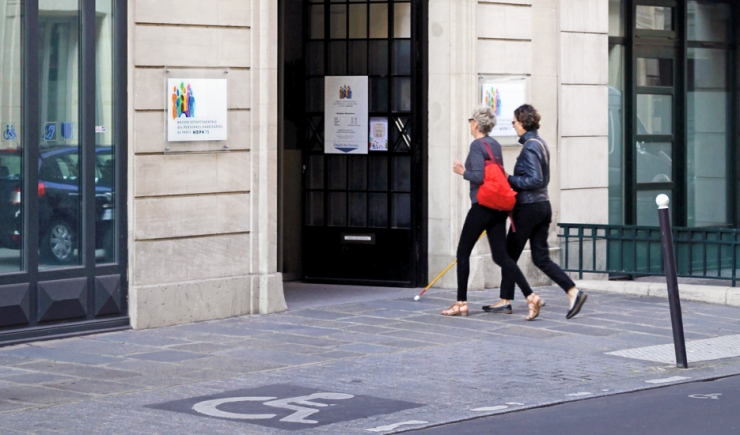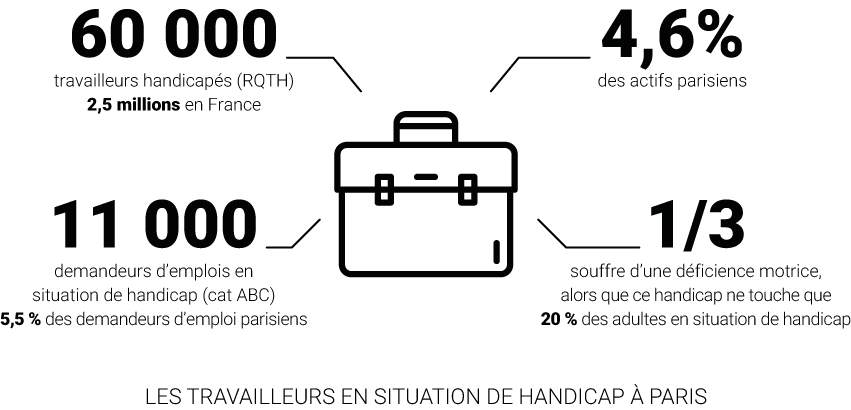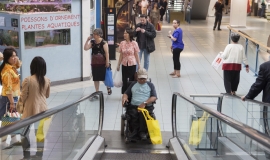An analysis of the main trends based on data from the Paris Disability Observatory.

Co-piloted by the Department of Social, Child and Health Protection (DASES) and the Paris Urbanism Agency (Apur), the Paris Disability Observatory (OPH) has associated twenty or so partners enabling the gathering and exchange of numerous data on public services for the disabled and for their inclusion.
On the occasion of the Observatory’s tenth anniversary and in the context of the Parisian Month for Disability, a half day of discussion and exchange on recent work and future studies was held on Tuesday 19th June at Paris City Hall - Hôtel de Ville de Paris-. Two publications were produced, a note about the inclusion in schools of children with disabilities giving examples and developments in Paris and a study on disability in Paris including analyses and recent trends.
For 10 years, the Observatory data have been regularly updated. Organised under seven themes, they make it possible to follow the evolution of people benefiting from aid and accompaniment, the medico-social provisions, schooling, access to housing, mobility, employment and training.
This study presents an analysis of the main recent trends extracted from these data.
A growing number of people are recognised as having a disability, particularly in Paris. 27,140 Parisians receive Benefit for Disabled Adults. This number has increased by 24% since 2007, the majority of which are men (56%). Over a third (35%) have psychiatric conditions, 20% mobility impairment, 10% have intellectual impairment, 8,800 children receive Educational Benefit for Disabled Children.
60,000 Parisians with disabilities are recognised as disabled workers, a workforce that has grown 25% since 2014. 11,000 job seekers are disabled, that is 5.5% of Parisian job seekers. There was a sharp increase between 2009 and 2016, greater than the overall growth of job seekers (+129% versus +23%). The challenge of professional integration comes to the fore with this rise in number of disabled job seekers who are generally less qualified and older than other job seekers.
Numerous measures have been put in place to favour the inclusion of these, sometimes invisible, sectors of the society. At the end of 2016, 9 housing units out of 10 in the social housing stock were effected by an agreement signed in the context of the Accessibility / Adaptation Convention with social housing landlords. 30% of this housing are accessible and 2.4% have been adapted. 7% of social housing demands are made by disabled Parisians and 10% of the City of Paris quota in 2016 were allocated to households with at least one disabled person. 18,800 people benefit from the free public transport card for people with disabilities -Navigo Emeraude Améthyste-, an number which increased by 30% between 2005 and 2016.





